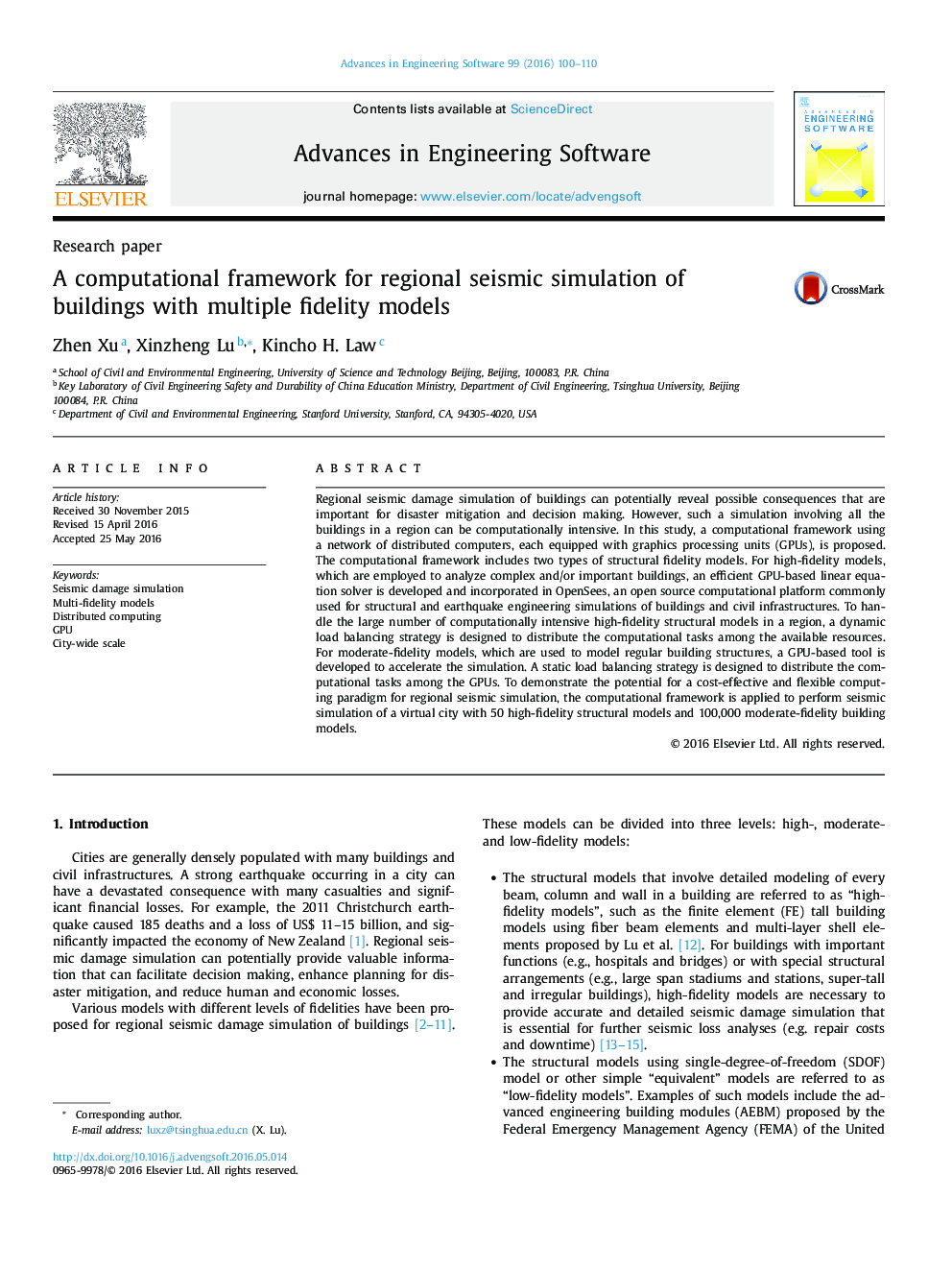| Article ID | Journal | Published Year | Pages | File Type |
|---|---|---|---|---|
| 6961661 | Advances in Engineering Software | 2016 | 11 Pages |
Abstract
Regional seismic damage simulation of buildings can potentially reveal possible consequences that are important for disaster mitigation and decision making. However, such a simulation involving all the buildings in a region can be computationally intensive. In this study, a computational framework using a network of distributed computers, each equipped with graphics processing units (GPUs), is proposed. The computational framework includes two types of structural fidelity models. For high-fidelity models, which are employed to analyze complex and/or important buildings, an efficient GPU-based linear equation solver is developed and incorporated in OpenSees, an open source computational platform commonly used for structural and earthquake engineering simulations of buildings and civil infrastructures. To handle the large number of computationally intensive high-fidelity structural models in a region, a dynamic load balancing strategy is designed to distribute the computational tasks among the available resources. For moderate-fidelity models, which are used to model regular building structures, a GPU-based tool is developed to accelerate the simulation. A static load balancing strategy is designed to distribute the computational tasks among the GPUs. To demonstrate the potential for a cost-effective and flexible computing paradigm for regional seismic simulation, the computational framework is applied to perform seismic simulation of a virtual city with 50 high-fidelity structural models and 100,000 moderate-fidelity building models.
Keywords
Related Topics
Physical Sciences and Engineering
Computer Science
Software
Authors
Xu Zhen, Lu Xinzheng, Kincho H. Law,
